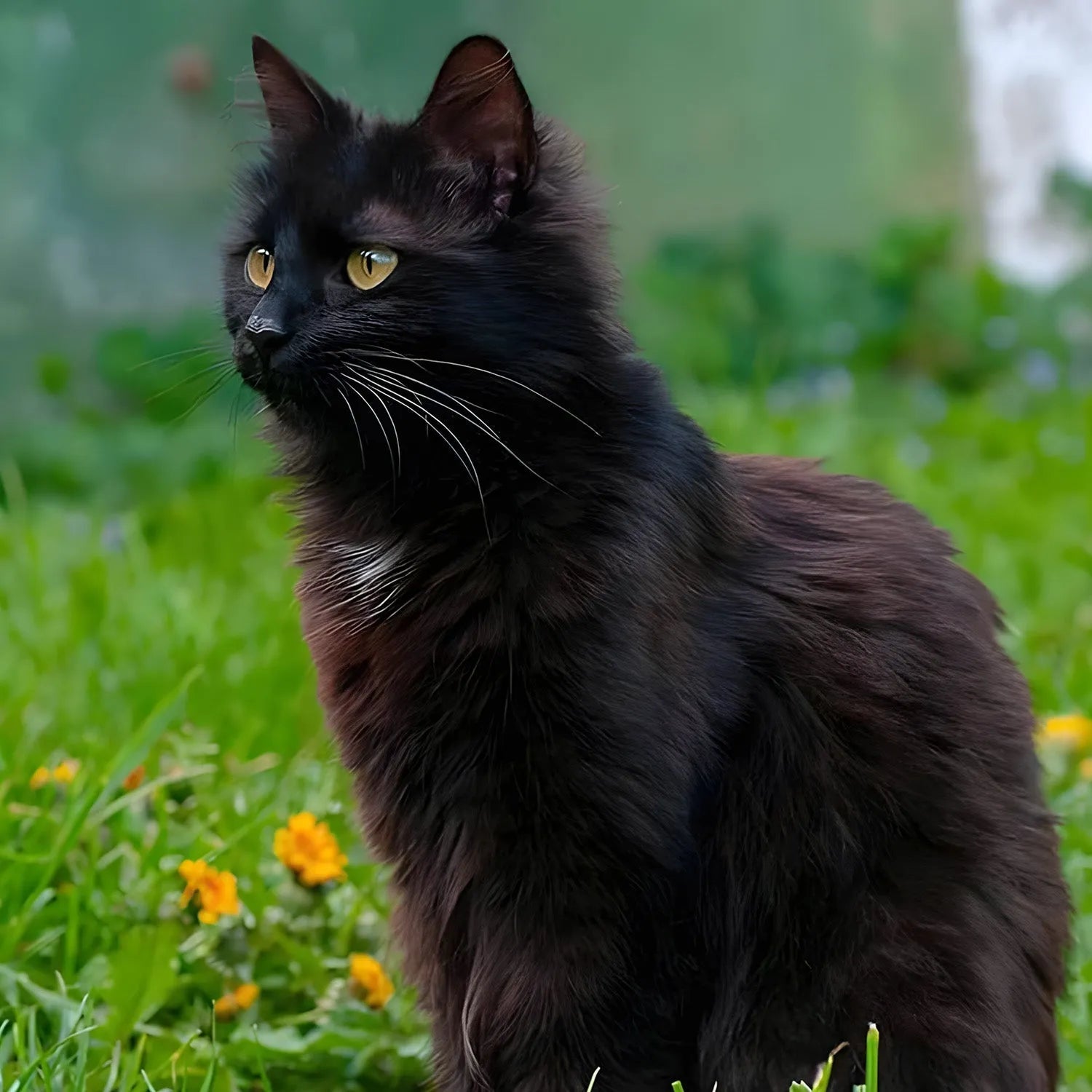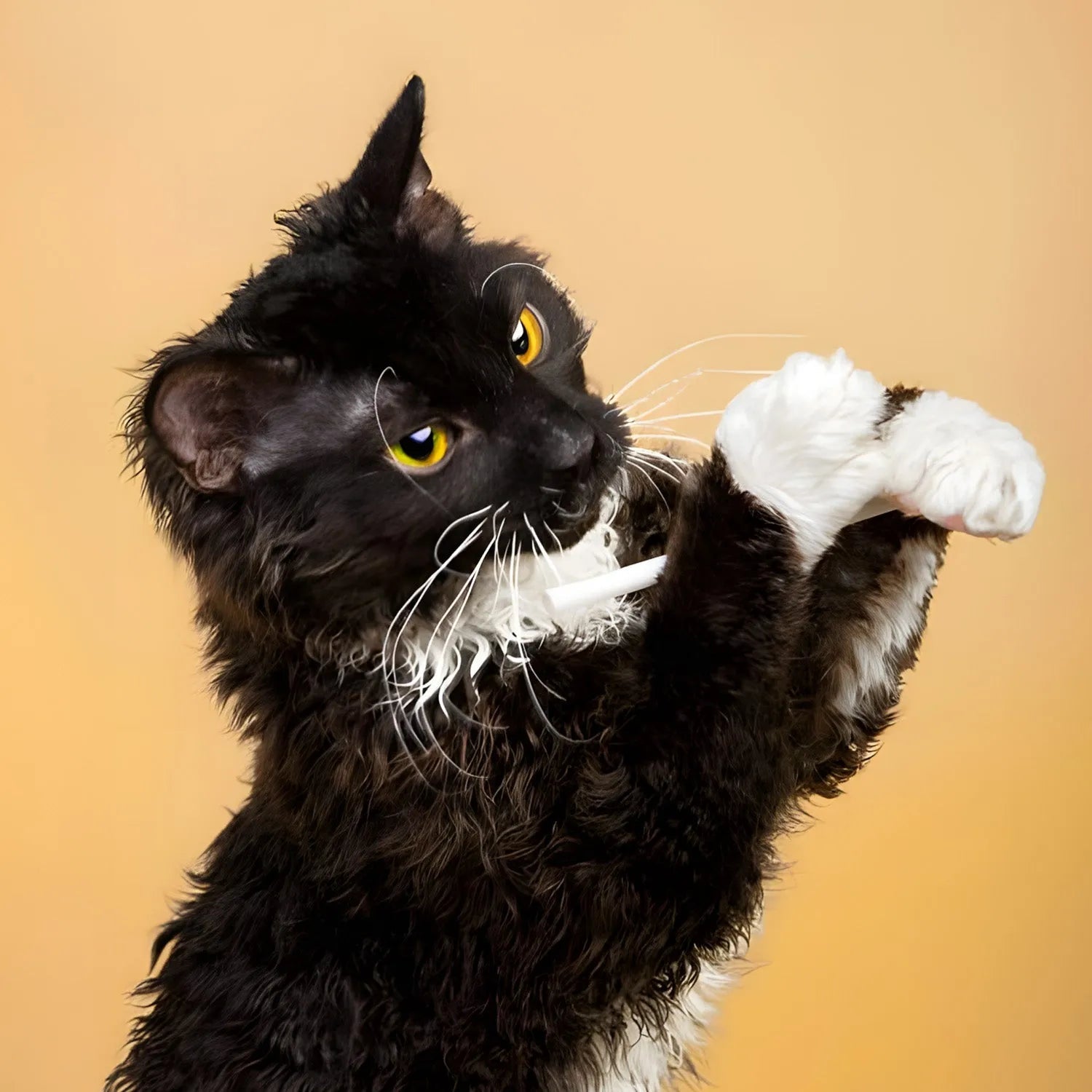Aegean Cat: The Adaptable and Friendly Seafarer
Introduction
The Aegean cat, hailing from the Greek Cycladic Islands, is one of the few natural cat breeds with minimal human intervention in its development. Known for its adaptability and friendliness, this breed has been living alongside humans for centuries, often seen around fishing ports and villages.
-
Environmental Adaptability: 5
-
Food Consumption: 3
-
Need for Companionship: 4
-
Trainability: 4
-
Tolerance of Children: 4
-
Ease of Domestication: 4
History and Origins
The Aegean cat is believed to have originated from the Cycladic Islands in Greece, where it has been living for thousands of years. This breed evolved naturally in the region and has been an integral part of the local community, especially around fishing areas. Historical references and archaeological findings suggest that cats resembling the Aegean have been around since ancient times. The Aegean cat is one of the few breeds that are recognized as native to Greece and is still relatively rare outside its homeland.
Physical Characteristics and Colors
Aegean cats are medium-sized with a sturdy and muscular build. They have a semi-longhair coat that is water-resistant, which is ideal for their coastal habitat. Their eyes are almond-shaped and come in shades of green or yellow. Aegean cats come in a variety of colors, typically white with patches of black, blue, red, cream, or tabby patterns. Their bicolor or tricolor patterns make them quite striking in appearance.
Lifestyle and Behavior
Aegean cats are known for their active and playful nature. They enjoy outdoor activities and are excellent hunters, often seen catching fish or small rodents. This breed is highly adaptable and can live both indoors and outdoors, though they thrive in environments where they can explore and engage in physical activities. Aegean cats are often found around water due to their island origins, and some even enjoy playing with or near water, a trait not commonly seen in many other breeds.
Trainability and Intelligence
Aegean cats are intelligent and quick learners. They can be trained to follow basic commands and enjoy interactive toys that challenge their minds. Positive reinforcement, such as treats and praise, works well with this breed. Aegean cats also have a natural curiosity, making them keen explorers of their surroundings. Their intelligence and adaptability make them excellent problem solvers, often figuring out how to open doors or cabinets to satisfy their curiosity.
Social Behavior and Human Interaction
Aegean cats are friendly and sociable, forming strong bonds with their human companions. They enjoy being around people and often follow their owners around the house. This breed is known for its affectionate nature and is often described as being dog-like in its loyalty and attachment to its family. Aegean cats thrive on social interaction and can become quite vocal when they want attention or when interacting with their owners.
Compatibility with Children and Other Pets
Aegean cats generally get along well with children and other pets, especially if they are introduced at a young age. Their playful and tolerant nature makes them great companions for kids. They are also known to be friendly towards other cats and dogs, provided they are socialized properly. Aegean cats' adaptable nature allows them to integrate well into multi-pet households, often forming close bonds with other animals.
Grooming and Care
The semi-longhair coat of the Aegean cat requires regular grooming to prevent matting and keep it looking its best. Weekly brushing is usually sufficient to remove loose hairs and reduce shedding. Regular dental care, ear cleaning, and nail trimming are also important to maintain their overall health. Aegean cats are relatively low-maintenance, but they do appreciate the grooming process, which can also serve as a bonding activity with their owners.
Health and Lifespan
Aegean cats are generally healthy with no specific genetic disorders associated with the breed. Regular veterinary check-ups and a balanced diet are essential to keep them in good health. With proper care, Aegean cats can live up to 15 years or more. It is important to ensure they have regular vaccinations and parasite control, as their adventurous nature might expose them to various environmental risks.
Environmental Adaptability
Aegean cats are highly adaptable and can thrive in various living environments. Whether in a spacious home with a yard or an apartment, they adjust well as long as they have opportunities for physical activities and mental stimulation. Their natural resilience and adaptability make them well-suited to different climates, though they do prefer moderate temperatures.
Feeding Requirements
A balanced diet rich in protein is important for maintaining the Aegean cat's health and energy levels. They enjoy a variety of foods, but it’s important to provide high-quality cat food and fresh water daily. Consult your veterinarian for specific dietary recommendations based on your cat’s age and health. Aegean cats may also enjoy occasional treats of cooked fish or meat, aligning with their natural diet.
Conclusion
The Aegean cat is an adaptable and friendly breed that brings a lively and affectionate presence to any household. Their intelligence, playfulness, and sociability make them wonderful companions for families and individuals alike. If you're looking for a cat that is both engaging and easy to care for, the Aegean cat might be the perfect fit for you.
For more information about other cat breeds and pet care tips, stay tuned to our blog!
References:
-
Katsoulis, E. (2021). "The History and Characteristics of the Aegean Cat." *Journal of Feline Studies*, 34(2), 123-135.
-
Papadopoulos, M. (2019). "Understanding the Aegean: A Guide to Care and Training." *Cat Enthusiast Magazine*, May issue, pp. 45-50.
-
Alexandros, G. (2020). "Genetic Health in Aegean Cats: What You Need to Know." *Veterinary Journal*, 78(4), 456-468.


